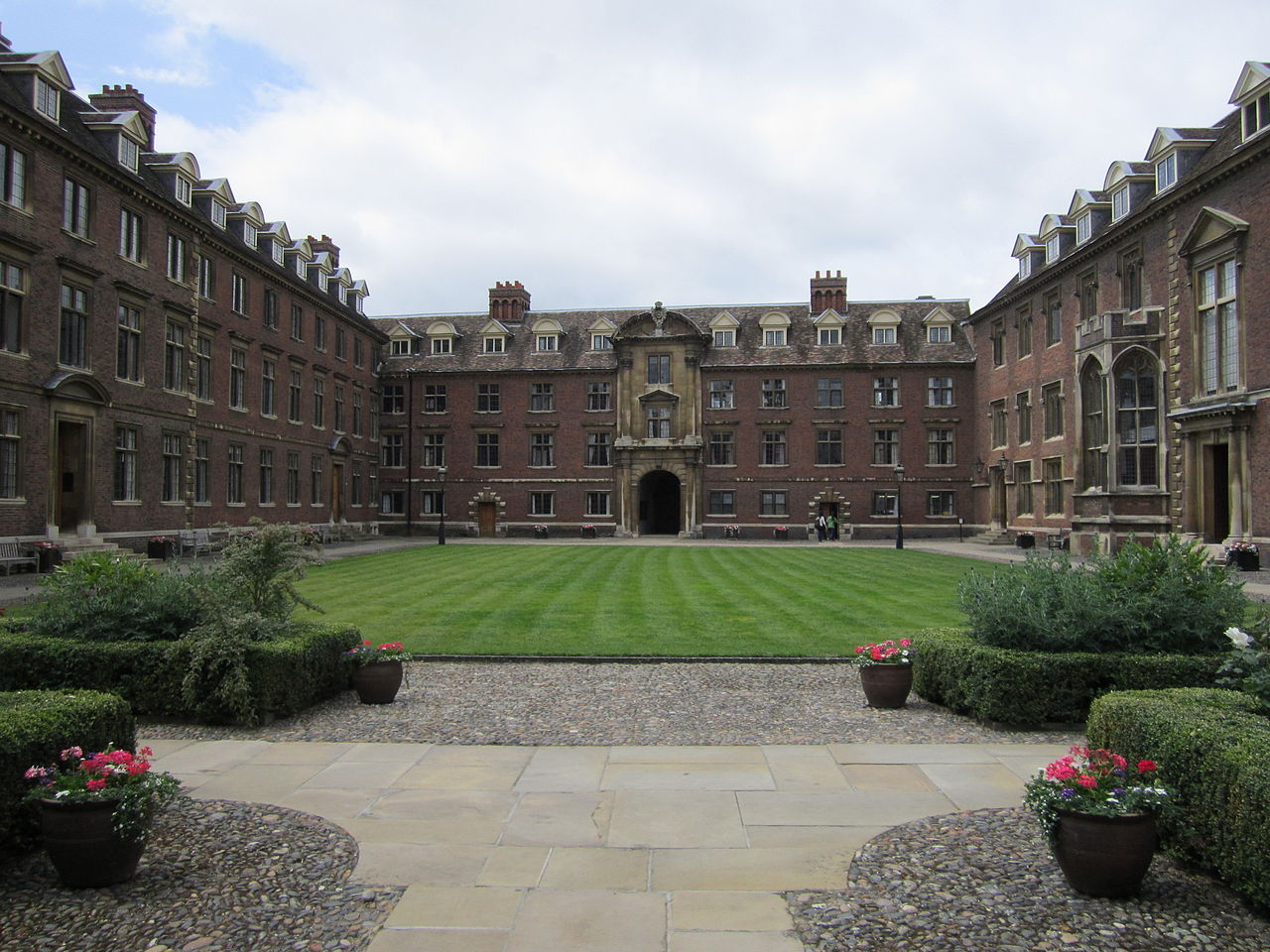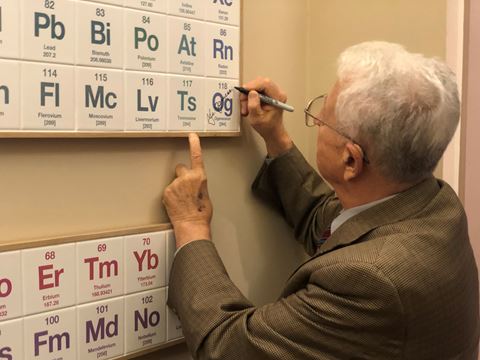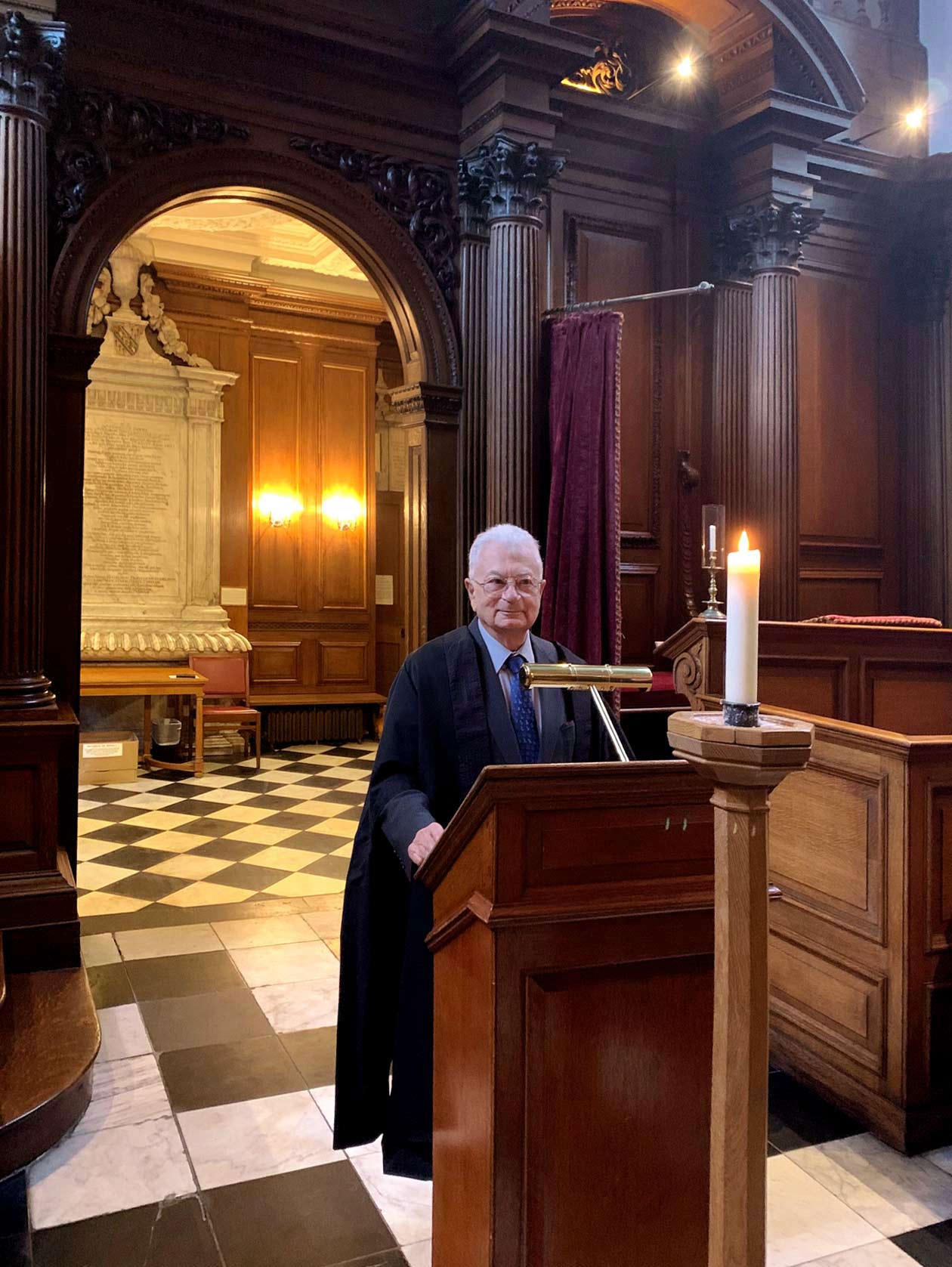Recognition of merits in medieval traditions
News, 17 October 2019
Scientific Leader of the Flerov Laboratory of Nuclear Reactions Academician Yuri Tsolakovich Oganessian and Director of the Laboratory Sergey Nikolaevich Dmitriev have recently returned from England where they have been welcomed in the Royal Society of Chemistry and in the St Catharine’s College of the Cambridge University. They spoke about their trip to the editor of the JINR newspaper.
S.N.: “In Cambridge, Yuri Tsolakovich was conferred the title of an Honorary Fellow of St Catharine’s College. There are hardly any analogues of the title in the Russian language. It is a medieval tradition. It is not an award of some scientific degrees, an honorary doctor for example. In fact, it is the acknowledgement of outstanding contributions made by prominent scientists accepted as Fellows of Cambridge University. By the way, St Catherine’s College has the highest rating in Cambridge in terms of natural sciences.
All this is put in such a way as the acceptance to the Masonic lodge. The initiation ceremony took place in the church of the college. There were candles everywhere, only candles, following the medieval traditions. Only fellows of the college take part in the ceremony. I was allowed to attend it as a rare exception. All participants wear robes of three different colours according to their ranks. The place of the Master (Head of the College) is on the left at the lectern. The bell rings at a settled time, all doors are closed, and no one is let in or out. There are no outsiders. Everyone stands up; the Master enters the hall and takes his place. A candidate is invited to speak; he is in a robe as well. He reads out his short oath of loyalty in Latin to serve to the College. The Dean takes his hand, leads to the Master, and gives the hands of the candidate put together to the hands of the Master. This action concludes the ceremony; the candidate is accepted to the narrow circle of fraternity”. It is an honour; it is significant and highly evaluated in the professional community. Then, all participants of the ceremony line up to meet a new fellow of the fraternity. After the buffet with champagne, everyone sits down and has dinner. During the dinner, the Master presents his colleagues.”
Yu. Ts.: “All the event was organized due to the rules of the 13th century. You just like merge into this far-away world, and then turn back into reality and see the same people around. I had time to count the participants: there were 62 of them. While singing an ancient hymn they stood with a little bit closed eyes and were like meditating…” (S.N. depicts a scheme of events that took place in the ceremonial hall: here you are led to the Master; he takes your hands in his, and then you exchange handshakes with all members of the fellowship).
I was mostly impressed by the fact that this tradition dates back for many centuries and remains the same nowadays. The veneration of St. Catherine of Egypt, the patroness of the college, is considered as something indispensable in service to big science. Isaac Newton, Francis Bacon and many other brilliant scientists studied at Cambridge University. And everything has been working this way for eight centuries. I also found out that the election of a candidate is held secretly. At first, the choice is discussed in the community of professionals, colleagues. Then the community awards these degrees and titles.”
S. N.: “Before that, we visited the Royal Society of Chemistry where Yuri Tsolakovich signed the cell of the Periodic Table with element 118. Scientists and the press were invited to the meeting.”
Yu. Ts.: “During my last visit dedicated to the acceptance of a title of an Honorary Fellow of the Royal Society of Chemistry, the President of the Society asked me to come an hour before the organized event. I thought that maybe he wanted to have a personal talk before the official ceremony. It turned out that he invited me to visit the Society’s library. I was impressed when I was shown materials related to Mendeleev: first editions of his scientific works, his letters. I did not know that he spoke English and French. It was known that he wrote in German a lot. There was a significant number of documents. I do not know any other places where such “treasures” may be put on the table in front of visitors. Then, I was shown to the Faraday Museum where I saw his laboratory records and some of them were with blank last pages. They opened them for me and asked: “Sign it, please!” Much attention is paid to the history and popularization of science, to bright episodes of scientific discoveries. During my last visit, I visited the college where Newton studied. The staff shows everyone an apple tree that is considered to be a grand-daughter of the tree from which an apple fell down on the head of the famous scientist.”
…The experience proves that when the last page of the notebook is closed or the “stop” button of the recorder is pushed the most interesting things happen. Having laughed at the end of the story about Newton’s apple, we sum up the milestones of our short meeting. I was also impressed by the depths and inviolability of many-century scientific traditions. I was impressed as well how the signature of an outstanding scientist occupies, in fact, its rightful place in the Periodic Table of Elements or in the Faraday’s lab notebooks.
Evgeny Molchanov, JINR Weekly Newspaper


